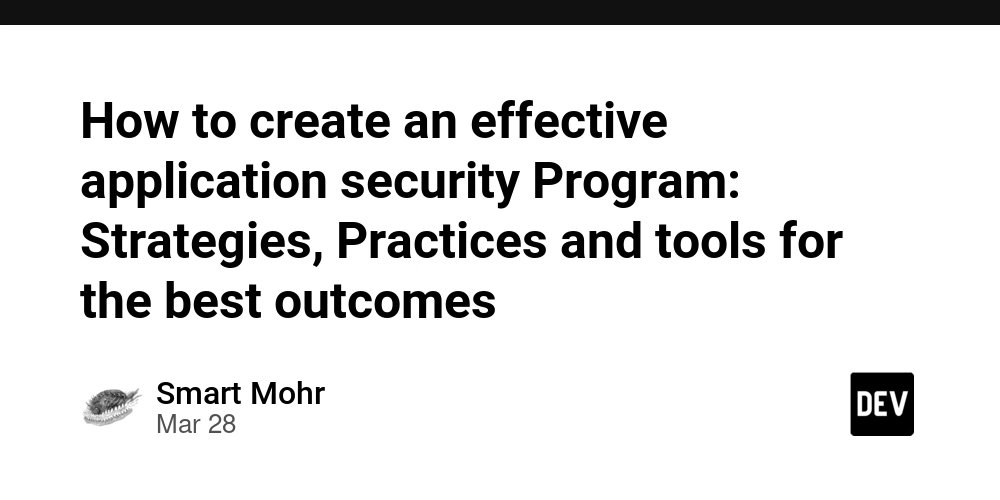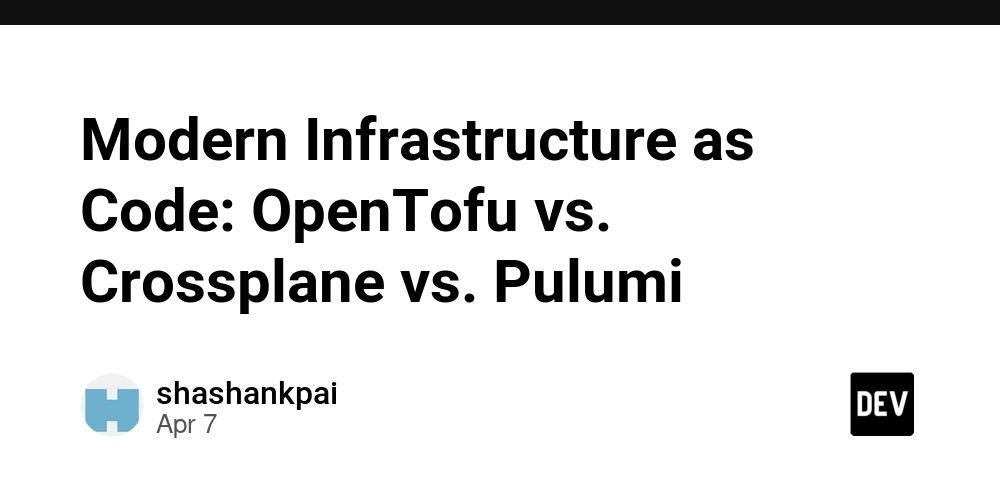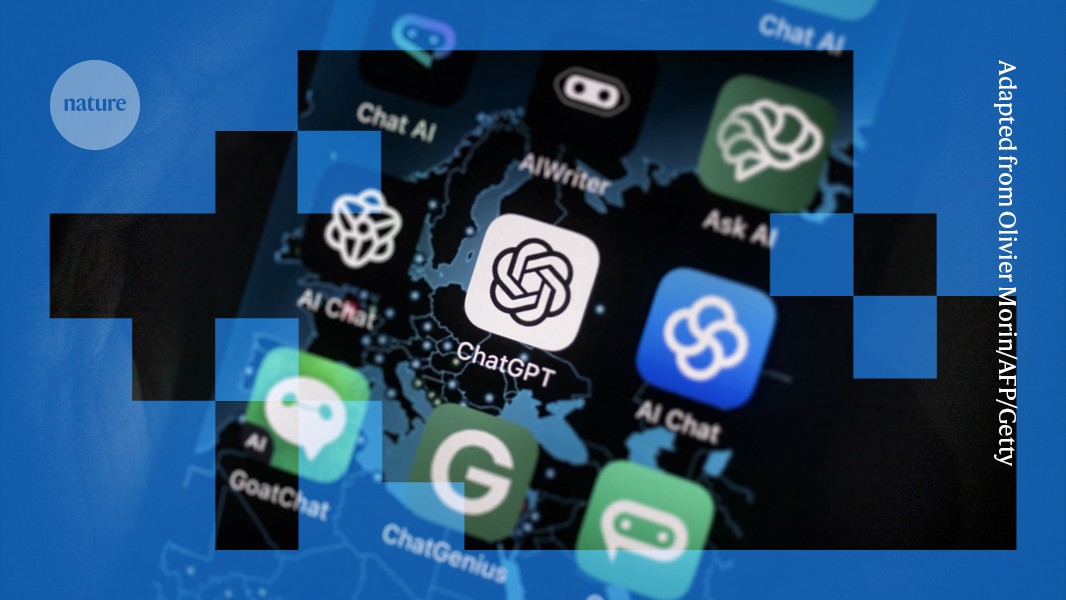How to create an effective application security Program: Strategies, Practices and tools for the best outcomes
To navigate the complexity of modern software development requires a thorough, multi-faceted approach to security of applications (AppSec) that goes beyond just vulnerability scanning and remediation. The ever-evolving threat landscape, in conjunction with the rapid pace of technological advancement and the growing intricacy of software architectures, requires a comprehensive, proactive approach that seamlessly incorporates security into all phases of the development process. see more This comprehensive guide explains the essential elements, best practices and cutting-edge technology that comprise an extremely effective AppSec program that empowers organizations to secure their software assets, minimize the risk of cyberattacks, and build a culture of security-first development. At the core of the success of an AppSec program is a fundamental shift in mindset that sees security as an integral part of the process of development, rather than an afterthought or separate endeavor. This paradigm shift requires close cooperation between security, developers, operations, and others. It breaks down silos and creates a sense of sharing responsibility, and encourages an approach that is collaborative to the security of the applications are created, deployed or manage. DevSecOps lets organizations incorporate security into their process of development. This means that security is addressed at all stages of development, from concept, development, and deployment up to the ongoing maintenance. The key to this approach is the development of clear security policies that include standards, guidelines, and policies that establish a framework for safe coding practices, threat modeling, and vulnerability management. These policies should be based upon industry best practices, such as the OWASP top ten, NIST guidelines and the CWE. They should be mindful of the particular requirements and risk specific to an organization's application and business context. These policies could be written down and made accessible to all parties and organizations will be able to be able to have a consistent, standard security process across their whole application portfolio. It is crucial to fund security training and education programs that will aid in the implementation of these guidelines. The goal of these initiatives is to equip developers with expertise and knowledge required to write secure code, spot vulnerable areas, and apply security best practices during the process of development. Training should cover a range of topics, including secure coding and common attack vectors, in addition to threat modeling and secure architectural design principles. Companies can create a strong foundation for AppSec by fostering an environment that promotes continual learning, and giving developers the resources and tools they require to incorporate security in their work. Security testing must be implemented by organizations and verification methods and also provide training to identify and fix vulnerabilities prior to exploiting them. This is a multi-layered process that includes static and dynamic analysis techniques in addition to manual penetration testing and code review. Early in the development cycle static Application Security Testing tools (SAST) can be utilized to discover vulnerabilities like SQL Injection, Cross-SiteScripting (XSS) and buffer overflows. Dynamic Application Security Testing tools (DAST), on the other hand can be used to simulate attacks against applications in order to identify vulnerabilities that might not be found through static analysis. These tools for automated testing are extremely useful in identifying weaknesses, but they're not an all-encompassing solution. manual penetration testing performed by security experts is also crucial to uncovering complex business logic-related vulnerabilities that automated tools could not be able to detect. Combining automated testing with manual validation allows organizations to get a complete picture of their application's security position. ai powered appsec They can also prioritize remediation strategies based on the degree and impact of the vulnerabilities. To enhance the efficiency of an AppSec program, organizations must take into consideration leveraging advanced technology like artificial intelligence (AI) and machine learning (ML) to enhance their security testing capabilities and vulnerability management. AI-powered tools can analyse huge amounts of code as well as application data, identifying patterns as well as anomalies that may indicate potential security issues. These tools also learn from past vulnerabilities and attack patterns, constantly increasing their capability to spot and stop emerging threats. One particularly promising application of AI within AppSec is using code property graphs (CPGs) to facilitate an accurate and more efficient vulnerability detection and remediation. CPGs are a comprehensive, semantic representation of an application's cod

To navigate the complexity of modern software development requires a thorough, multi-faceted approach to security of applications (AppSec) that goes beyond just vulnerability scanning and remediation. The ever-evolving threat landscape, in conjunction with the rapid pace of technological advancement and the growing intricacy of software architectures, requires a comprehensive, proactive approach that seamlessly incorporates security into all phases of the development process. see more This comprehensive guide explains the essential elements, best practices and cutting-edge technology that comprise an extremely effective AppSec program that empowers organizations to secure their software assets, minimize the risk of cyberattacks, and build a culture of security-first development.
At the core of the success of an AppSec program is a fundamental shift in mindset that sees security as an integral part of the process of development, rather than an afterthought or separate endeavor. This paradigm shift requires close cooperation between security, developers, operations, and others. It breaks down silos and creates a sense of sharing responsibility, and encourages an approach that is collaborative to the security of the applications are created, deployed or manage. DevSecOps lets organizations incorporate security into their process of development. This means that security is addressed at all stages of development, from concept, development, and deployment up to the ongoing maintenance.
The key to this approach is the development of clear security policies that include standards, guidelines, and policies that establish a framework for safe coding practices, threat modeling, and vulnerability management. These policies should be based upon industry best practices, such as the OWASP top ten, NIST guidelines and the CWE. They should be mindful of the particular requirements and risk specific to an organization's application and business context. These policies could be written down and made accessible to all parties and organizations will be able to be able to have a consistent, standard security process across their whole application portfolio.
It is crucial to fund security training and education programs that will aid in the implementation of these guidelines. The goal of these initiatives is to equip developers with expertise and knowledge required to write secure code, spot vulnerable areas, and apply security best practices during the process of development. Training should cover a range of topics, including secure coding and common attack vectors, in addition to threat modeling and secure architectural design principles. Companies can create a strong foundation for AppSec by fostering an environment that promotes continual learning, and giving developers the resources and tools they require to incorporate security in their work.
Security testing must be implemented by organizations and verification methods and also provide training to identify and fix vulnerabilities prior to exploiting them. This is a multi-layered process that includes static and dynamic analysis techniques in addition to manual penetration testing and code review. Early in the development cycle static Application Security Testing tools (SAST) can be utilized to discover vulnerabilities like SQL Injection, Cross-SiteScripting (XSS) and buffer overflows. Dynamic Application Security Testing tools (DAST), on the other hand can be used to simulate attacks against applications in order to identify vulnerabilities that might not be found through static analysis.
These tools for automated testing are extremely useful in identifying weaknesses, but they're not an all-encompassing solution. manual penetration testing performed by security experts is also crucial to uncovering complex business logic-related vulnerabilities that automated tools could not be able to detect. Combining automated testing with manual validation allows organizations to get a complete picture of their application's security position. ai powered appsec They can also prioritize remediation strategies based on the degree and impact of the vulnerabilities.
To enhance the efficiency of an AppSec program, organizations must take into consideration leveraging advanced technology like artificial intelligence (AI) and machine learning (ML) to enhance their security testing capabilities and vulnerability management. AI-powered tools can analyse huge amounts of code as well as application data, identifying patterns as well as anomalies that may indicate potential security issues. These tools also learn from past vulnerabilities and attack patterns, constantly increasing their capability to spot and stop emerging threats.
One particularly promising application of AI within AppSec is using code property graphs (CPGs) to facilitate an accurate and more efficient vulnerability detection and remediation. CPGs are a comprehensive, semantic representation of an application's codebase. They can capture not only the syntactic structure of the code, but additionally the intricate relationships and dependencies between different components. AI-powered tools that make use of CPGs can perform a context-aware, deep analysis of the security stance of an application. They can identify vulnerabilities which may be missed by traditional static analyses.
Additionally, CPGs can enable automated vulnerability remediation with the use of AI-powered repair and transformation methods. In order to understand the semantics of the code and the characteristics of the vulnerabilities, AI algorithms can generate specific, context-specific fixes that tackle the root of the problem instead of only treating the symptoms. This method not only speeds up the remediation process but lowers the chance of creating new security vulnerabilities or breaking functionality that is already in place.
https://sites.google.com/view/howtouseaiinapplicationsd8e/home Another important aspect of an effective AppSec program is the integration of security testing and verification into the continuous integration and continuous deployment (CI/CD) process. By automating security checks and embedding them in the build and deployment process, companies can spot vulnerabilities in the early stages and prevent them from making their way into production environments. This shift-left security approach allows quicker feedback loops and reduces the amount of time and effort required to discover and rectify issues.
To attain this level of integration businesses must invest in appropriate infrastructure and tools to enable their AppSec program. This includes not only the security tools but also the platforms and frameworks that enable seamless automation and integration. Containerization technology such as Docker and Kubernetes could play a significant role in this regard, creating a reliable, consistent environment for running security tests as well as separating the components that could be vulnerable.
Alongside technical tools effective communication and collaboration platforms are vital to creating the culture of security as well as allow teams of all kinds to collaborate effectively. Issue tracking tools such as Jira or GitLab can assist teams to determine and control vulnerabilities, while chat and messaging tools like Slack or Microsoft Teams can facilitate real-time communication and sharing of knowledge between security professionals and development teams.
The success of an AppSec program is not just on the tools and techniques employed but also on the individuals and processes that help them. what role does ai play in appsec A strong, secure culture requires leadership commitment in clear communication, as well as the commitment to continual improvement. By instilling a sense of sharing responsibility, promoting dialogue and collaboration, and providing the required resources and assistance organisations can establish a climate where security isn't just an option to be checked off but is a fundamental element of the process of development.
In order for their AppSec programs to continue to work for the long-term Organizations must set up important metrics and key-performance indicators (KPIs). development security workflow These KPIs can help them monitor their progress and identify areas of improvement. These indicators should cover the entire application lifecycle that includes everything from the number of vulnerabilities discovered during the initial development phase to time it takes to correct the problems and the overall security status of applications in production. By monitoring and reporting regularly on these indicators, companies can show the value of their AppSec investments, identify patterns and trends and make informed choices about where to focus on their efforts.
To stay current with the ever-changing threat landscape and the latest best practices, companies should be engaged in ongoing education and training. It could involve attending industry events, taking part in online training courses and collaborating with outside security experts and researchers to stay abreast of the latest developments and techniques. By cultivating a culture of constant learning, organizations can make sure that their AppSec program remains adaptable and robust in the face of new threats and challenges.
It is crucial to understand that security of applications is a process that requires constant commitment and investment. Organizations must constantly reassess their AppSec strategy to ensure that it remains effective and aligned to their objectives as new technology and development methods emerge. By adopting a strategy that is constantly improving, encouraging cooperation and collaboration, and harnessing the power of advanced technologies like AI and CPGs, companies can build a robust, flexible AppSec program that does not just protect their software assets but also helps them innovate with confidence in an ever-changing and challenging digital world.development security workflow















































































